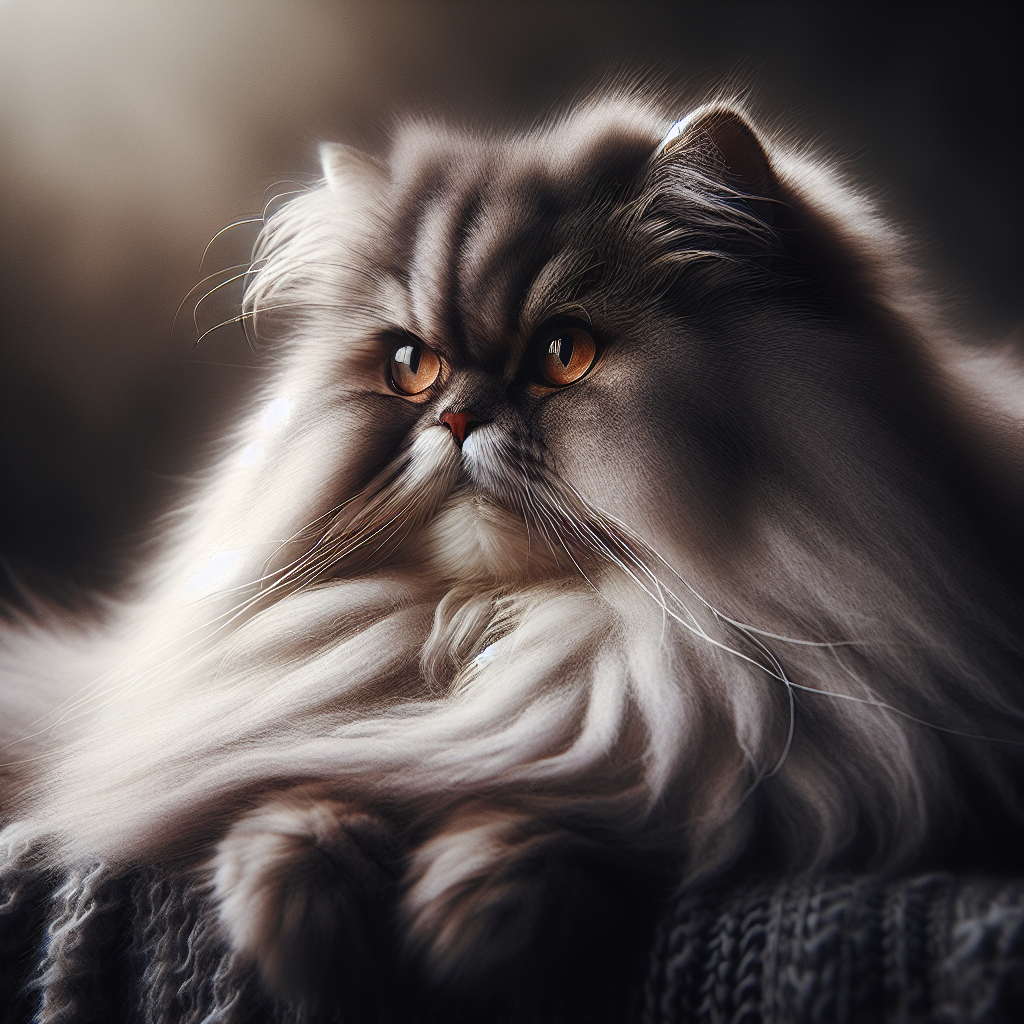If you’re curious about Persian cats and want to know more about these adorable feline companions, look no further! In this article, we’ll uncover 10 fascinating facts about Persian cats that every cat lover should know. From their luxurious coats to their affectionate nature, these charming creatures have captured the hearts of many. So, let’s explore the wonderful world of Persian cats together!
Physical Appearance
Persian cats are known for their distinct physical appearance. They have a sturdy and well-balanced body structure, with medium-sized bones and a broad chest. Their legs are short and strong, giving them a graceful and elegant gait. Persian cats also have a round head with a short, wide nose and small ears that are set far apart. The breed is famous for its beautiful coat, which can be long or short, depending on the specific variation. They come in a wide range of colors and patterns, from solid colors like white, black, and cream to bi-color and tabby patterns. Additionally, Persian cats are known for their captivating eye colors, such as blue, green, copper, and odd-eyed (each eye a different color).
Personality Traits
Persian cats have a gentle and calm nature, making them excellent companions for those seeking a laid-back and peaceful pet. They are independent creatures who enjoy their own space but also crave affection and enjoy being around their human companions. While they may be quiet and reserved, they can form deep bonds with their owners and show them great loyalty. Persian cats are known for their tranquil demeanor, often preferring a quiet and peaceful environment. While they may not be as active or playful as some other cat breeds, they still enjoy gentle interactions and can provide a soothing presence in the home.

Grooming Needs
Due to their long and dense fur, Persian cats require regular grooming to keep their coat healthy and free from matting. Daily brushing is essential to prevent tangles and keep their fur looking beautiful. Regular bathing is also recommended to maintain their hygiene and prevent skin issues. In addition to coat care, Persian cats require regular eye and ear cleaning. Their prominent eyes can be prone to tear staining, so gently wiping their eyes with a damp cloth is necessary to keep them clean and free from irritation. Similarly, their ears should be checked and cleaned regularly to prevent wax build-up and infections.
Health Concerns
While Persian cats are generally healthy, they are prone to certain health issues that potential owners should be aware of. Respiratory issues, such as difficulty breathing and snoring, are common in this breed due to their flat faces and shortened airways. Dental problems, such as tooth decay and gum disease, can also affect Persian cats, so regular dental care is crucial. Another health concern specific to Persian cats is polycystic kidney disease, which is an inherited condition that can lead to kidney failure. Regular veterinary check-ups and a proper diet can help manage and prevent these health concerns.

Exercise Requirements
Persian cats are known for their low activity level, and while they may not be as energetic as some other breeds, they still require regular exercise to stay healthy. Indoor playtime is an excellent way to provide mental and physical stimulation for your Persian cat. They enjoy playing with toys, such as interactive puzzles or feather wands, and engaging in gentle play sessions with their owners. Mental stimulation is also essential for their well-being, as they are intelligent cats who benefit from activities that challenge their minds, such as treat puzzles or clicker training.
Feeding Guidelines
Proper nutrition is vital for Persian cats to maintain their health and well-being. It is recommended to feed them high-quality cat food that is specifically formulated for their unique nutritional needs. Their diet should be balanced and include a mix of protein, fat, and carbohydrates. It’s important to avoid overfeeding them, as Persian cats are prone to obesity, which can lead to various health issues. If your Persian cat has a sensitive stomach, you may need to choose a cat food that is specially designed for sensitive digestion. Your veterinarian can provide guidance on selecting the right diet for your Persian cat’s specific needs.
Socialization
Persian cats are generally adaptable and can be introduced to new people and environments with proper socialization. Slow introductions are recommended to allow them to adjust gradually and feel comfortable in new situations. Positive experiences are crucial during this process, as it helps build trust and confidence in your cat. Providing treats, toys, and praise during interactions can reinforce positive associations and make the socialization process more enjoyable for your Persian cat. If you have other pets in the household, it’s important to gradually introduce them to your Persian cat and monitor their interactions to ensure a harmonious coexistence.
Living Environment
Persian cats are well-suited to an indoor lifestyle to protect them from potential dangers, such as traffic, predators, and exposure to diseases. Creating a safe space for your Persian cat is essential, which includes providing scratching posts, cozy beds, and hiding spots. Temperature and humidity also play a role in their comfort and well-being. Persian cats are sensitive to extreme temperatures, so it’s important to keep their environment at a moderate temperature and provide adequate ventilation. Additionally, maintaining a proper level of humidity can help prevent dry skin and respiratory issues, which are common concerns for this breed.
Training Tips
Persian cats can be trained using positive reinforcement techniques. Reward-based training, such as treats or praise, can motivate and encourage desired behaviors. Litter box training is essential for a Persian cat, as they are known for their cleanliness. Providing a clean and easily accessible litter box and rewarding your cat for using it can establish good litter box habits. It’s also important to discourage destructive behavior, such as scratching furniture or excessive scratching, through redirection and the use of scratching posts or boards. Consistency, patience, and a calm approach are key when training your Persian cat.
Breed Variations
There are several breed variations within the Persian cat family, each with its own unique characteristics. The Himalayan Persian, also known as the Colorpoint Persian, has a long coat and striking blue eyes. They are known for their color-pointed patterns, similar to Siamese cats. The Exotic Shorthair Persian, as the name suggests, has a shorter coat compared to the traditional long-haired Persian. They have the same distinct facial features but with a more low-maintenance coat. Lastly, there are Toy and Teacup variations, which refer to smaller-sized Persian cats. These variations are controversial and not recognized by major cat associations, so it’s essential to do thorough research and ensure the breeder you choose is reputable.
In conclusion, Persian cats are beautiful and charming companions known for their stunning physical appearance, gentle nature, and low activity level. They require regular grooming, proper nutrition, and a safe living environment to thrive. With patience, positive reinforcement, and proper socialization, Persian cats can become loving and loyal members of your family. Whether you choose a traditional Persian, a Himalayan, an Exotic Shorthair, or a Toy/Teacup Persian, providing them with the care and attention they need will lead to a rewarding and fulfilling companionship.

